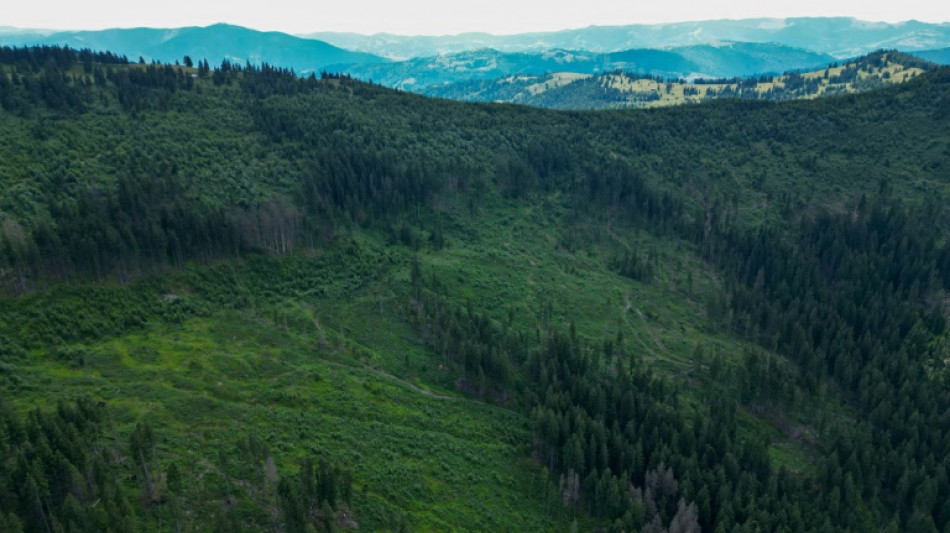
-
 Asian markets tumble as tech bubble fears grow
Asian markets tumble as tech bubble fears grow
-
Pay to protect: Brazil pitches new forest fund at COP30
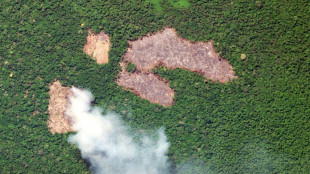
-
 Iraq's social media mercenaries dying for Russia
Iraq's social media mercenaries dying for Russia
-
Young leftist Trump foe elected New York mayor

-
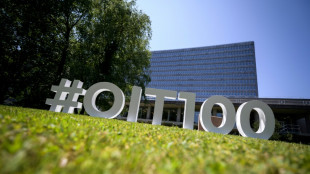 Concerns at ILO over expected appointment of close Trump advisor
Concerns at ILO over expected appointment of close Trump advisor
-
Venus Williams to return to Auckland Classic at the age of 45

-
 No deal yet on EU climate targets as COP30 looms
No deal yet on EU climate targets as COP30 looms
-
Typhoon death toll climbs to 66 in the Philippines

-
 NATO tests war preparedness on eastern flank facing Russia
NATO tests war preparedness on eastern flank facing Russia
-
Uncapped opener Weatherald in Australia squad for first Ashes Test

-
 Liverpool down Real Madrid in Champions League, Bayern edge PSG
Liverpool down Real Madrid in Champions League, Bayern edge PSG
-
Van Dijk tells Liverpool to keep calm and follow Arsenal's lead

-
 PSG left to sweat on injuries to Dembele and Hakimi
PSG left to sweat on injuries to Dembele and Hakimi
-
Reddit, Kick to be included in Australia's social media ban

-
 Ex-Zimbabwe cricket captain Williams treated for 'drug addiction'
Ex-Zimbabwe cricket captain Williams treated for 'drug addiction'
-
Padres ace Darvish to miss 2026 MLB season after surgery

-
 Diaz hero and villain as Bayern beat PSG in Champions League showdown
Diaz hero and villain as Bayern beat PSG in Champions League showdown
-
Liverpool master Real Madrid on Alexander-Arnold's return

-
 Van de Ven back in favour as stunning strike fuels Spurs rout
Van de Ven back in favour as stunning strike fuels Spurs rout
-
Juve held by Sporting Lisbon in stalling Champions League campaign

-
 New lawsuit alleges Spotify allows streaming fraud
New lawsuit alleges Spotify allows streaming fraud
-
Stocks mostly drop as tech rally fades
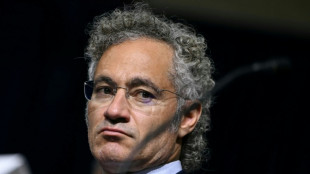
-
 LIV Golf switching to 72-hole format in 2026: official
LIV Golf switching to 72-hole format in 2026: official
-
Manchester City have become 'more beatable', says Dortmund's Gross

-
 Merino brace sends Arsenal past Slavia in Champions League
Merino brace sends Arsenal past Slavia in Champions League
-
Djokovic makes winning return in Athens

-
 Napoli and Eintracht Frankfurt in Champions League stalemate
Napoli and Eintracht Frankfurt in Champions League stalemate
-
Arsenal's Dowman becomes youngest-ever Champions League player

-
 Cheney shaped US like no other VP. Until he didn't.
Cheney shaped US like no other VP. Until he didn't.
-
Pakistan edge South Africa in tense ODI finish in Faisalabad

-
 Brazil's Lula urges less talk, more action at COP30 climate meet
Brazil's Lula urges less talk, more action at COP30 climate meet
-
Barca's Lewandowski says his season starting now after injury struggles

-
 Burn urges Newcastle to show their ugly side in Bilbao clash
Burn urges Newcastle to show their ugly side in Bilbao clash
-
French pair released after 3-year Iran jail ordeal

-
 Getty Images largely loses lawsuit against UK AI firm
Getty Images largely loses lawsuit against UK AI firm
-
Cement maker Lafarge on trial in France over jihadist funding

-
 Sculpture of Trump strapped to a cross displayed in Switzerland
Sculpture of Trump strapped to a cross displayed in Switzerland
-
Pakistan's Rauf and Indian skipper Yadav punished over Asia Cup behaviour

-
 Libbok welcomes 'healthy' Springboks fly-half competition
Libbok welcomes 'healthy' Springboks fly-half competition
-
Reeling from earthquakes, Afghans fear coming winter
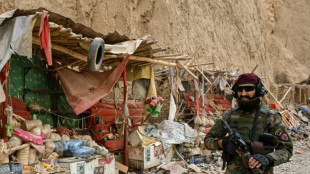
-
 Ronaldo reveals emotional retirement will come 'soon'
Ronaldo reveals emotional retirement will come 'soon'
-
Munich's surfers stunned after famed river wave vanishes

-
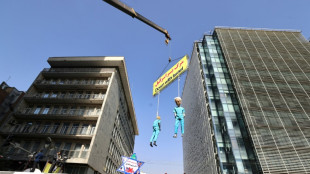 Iran commemorates storming of US embassy with missile replicas, fake coffins
Iran commemorates storming of US embassy with missile replicas, fake coffins
-
Gauff sweeps Paolini aside to revitalise WTA Finals defence

-
 Shein vows to cooperate with France in probe over childlike sex dolls
Shein vows to cooperate with France in probe over childlike sex dolls
-
Young leftist Mamdani on track to win NY vote, shaking up US politics

-
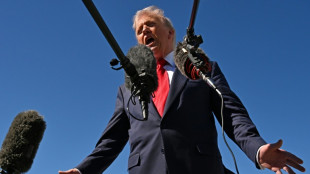 US government shutdown ties record for longest in history
US government shutdown ties record for longest in history
-
King Tut's collection displayed for first time at Egypt's grand museum

-
 Typhoon flooding kills over 40, strands thousands in central Philippines
Typhoon flooding kills over 40, strands thousands in central Philippines
-
Trent mural defaced ahead of Liverpool return


The fight to save 'sacred' Carpathian forests from loggers
Vast gaps in the forest canopy are visible from above Romania's Carpathian mountains, while stumps studding the ground are reminders of the trees chopped into logs and piled beside dirt roads.
Forest engineer Gabriel Oltean has fought against this intense, often illegal logging with cameras that broadcast live on YouTube the incessant passage of woodcutters' trucks.
He said he caused "a psychological shock" among locals at the gates of the legendary Transylvania region, which led to investigations and wood confiscations -- though no criminal convictions yet.
People like him are fighting for forests blanketing the 1,500-kilometre (900-mile) mountain range that spans eight nations and sits in a region that is supposed to be among the best preserved in the EU.
But in reality a lack of enforcement and vast profits for the taking mean the forests' destruction, which is leading to pressure in Romania, is still largely greeted with indifference in Poland.
"This forest should be sacred. We should be protecting such places," Greenpeace Poland spokesman Marek Jozefiak said in the village of Zatwarnica in the country's southeast.
"You see that hill? They've already logged it. Like 50 metres (160 feet) from a bear den," said Jozefiak, noting only some 150 brown bears are left in Poland.
One of Europe's "last remaining biodiversity havens", the forests covering the Carpathians house bison, lynx, wolves and wildcats, along with scores of bird species like the three-toed woodpecker or the Ural owl.
The old-growth forests of the mountain range are also important for mitigating climate change.
Worldwide, forests absorb a net amount of 7.6 billion tonnes of carbon dioxide, or 1.5 times what the United States emits, according to a study published in 2021 in the journal Nature Climate Change.
But "on average a forest area of more than five football pitches is lost to wood extraction every single hour" in the Carpathians, Greenpeace said in a report last November.
- Lucrative business -
More than half of the area of the Carpathians is in Romania, with the range also running through Slovakia, Poland, Ukraine and to a lesser extent Hungary, Serbia, the Czech Republic as well as Austria.
On paper it's one of the most preserved regions in the EU, but only one to three percent of the forest is strictly protected in Poland, according to the Greenpeace report.
The state forestry agency, responsible for both protecting the forests and cutting the wood, owns the majority of forests.
Its revenue increased by 50 percent in 2022 year-on-year to 15.2 billion zlotys (3.4 billion euros), 90 percent of which comes from the sale of wood.
The agency is "trying to dig as much money as they can out of it", Jozefiak said.
In 2018, Europe's top court ruled that Poland's government broke the law by logging in Bialowieza, a UNESCO world heritage site that is Europe's largest surviving primeval forest.
Authorities have responded to accusations of illegal logging by planting new trees -- which activists have dismissed as failing to compensate for the ecological damage.
Instead, environmentalists would like to see more forests declared national parks for better protection.
Greenpeace is calling on the European Union to develop and fund an action plan to safeguard the mountain range.
"We want to brand the Carpathians, just like the Alps... The Carpathians should be famous too," Jozefiak said.
Poland has not created a single new national park in over two decades because of legislation according local authorities a veto.
Even in those that exist, exploitation is not prohibited.
In Stuposiany, a state forest division in the Carpathians that is curiously wedged into a national park, officials say protection is already high on the agenda.
"The timber harvesting process does not have a negative impact on the forest ecosystem," chief forester Ewa Tkacz told AFP, adding that "nature is very dear to us".
- 'Don't realise what we are losing' -
Still, concern for the mountains has spawned protests, including logging blockades organised by a citizens' initiative.
Andrzej Zbrozek, a biology teacher who lives deep in the woods, said the Carpathians "are becoming a farmland of sorts, subordinated to timber harvesting".
"It's hard for me to accept that the forests I've been wandering through my whole life are becoming much less valuable, thinned out," the 53-year-old told AFP against a backdrop of birdsong.
Zbrozek -- soft-spoken, with animated eyes, his long-hair tied back in a ponytail -- said he struggles to instil concern for the Carpathians in his students, who include the children of foresters, hunters and farmers.
"They're used to it. They don't see it, they aren't able to appreciate" the nature surrounding them, he said.
"We don't realise what we're losing," he added as he blamed logging for also worsening the effects of any floods.
Slovakia's share of the Carpathians -- second in size to Romania's -- has also come in for environmental concern.
Geographer Mikulas Huba said that while on paper forest cover exceeds 40 percent of Slovak territory, "these are no longer real forests" but often logging sites or bushes.
- Surveillance cameras, tracking app -
In eastern Romania, deep in the Carpathians in Ghimes-Faget commune, the forest engineer Oltean searched in vain for trees that he marked two years ago.
But the method -- still used to track illegal logging -- is not efficient with some markings simply fading over time or becoming covered by resin.
"If I couldn't find them (the marked trees), what can you expect of a forest guard inspector who is teleported here from another place to find problems and possible illegalities?" the 32-year-old asked.
While the forests were largely preserved under the regime of communist dictator Nicolae Ceausescu, who used them as hunting ground, the authorities have long struggled to stop the rampant illegal logging that took hold after his death in 1989.
Some 80 million cubic metres of timber were cut illegally between 1990 and 2011, according to an estimate by the Romanian Court of Auditors dating from 2013.
Currently, forests cover 6.6 million hectares, or a third of the country, while the timber industry is estimated to be worth nearly 10 billion euros, or 4.5 percent of the country's GDP, according to accounting giant PwC.
The cut wood is used as firewood, especially in rural areas, or exported for the international furniture and DIY markets.
While it is difficult to have exact figures, the World Wildlife Fund (WWF) estimates on the basis of spot checks that a third of the convoys carrying wood are illegal.
Alerted by activist groups, the European Commission launched an infringement procedure in early 2020, which could see Romania face financial sanctions.
To better track looters, a digital tool, called Sumal, was implemented in 2014 and has since been upgraded -- with former environment minister Barna Tanczos hailing it as "the most sophisticated system in Europe".
Carriers must upload photos showing the amount of timber leaving the forest into an app so that it can be checked with their loads when they reach the warehouses.
But criminal groups still often manage to circumvent these checks by organising several transports with a single authorisation notice.
Only a small part is confiscated: Last year, nearly 90,000 cubic metres of wood were seized, according to the environment ministry.
So the government decided to go further. In June, parliament passed a law to make cameras compulsory on forest roads. In 2024, the first 350 will be deployed.
- Corruption -
To be able to intercept suspects, software capable of alerting in real time would be needed, said Romania WWF expert Radu Melu.
"Otherwise the trucks pass by the video camera, the image is recorded and archived, but then deleted after a certain amount of time without anything happening," he said.
The government plans to implement a sophisticated surveillance system with satellite images, drones and planes flying over the areas -- an investment of 46 million euros financed by European funds.
For Oltean, too, only technology will make it possible to fight against logging.
Criminal groups often benefit from complicity within a corrupt forestry administration, as several resounding scandals have shown in recent years.
"It is clear to me that human involvement must be reduced," he said. "No matter how good a friend you are with the policeman that caught you, if your speed is recorded on radar, there's nothing you can do about it."
In his area of Ghimes, ranger Petre Oltean -- who is not related to Gabriel Oltean -- sees the fight against logging is gaining pace thanks to the mobilisation of "competent people" and the arrival of rangers who are "younger, with a different mentality".
But those who fight sometimes do so at the risk of their lives.
Attacks on activists and forest agents have been recorded, two of whom were killed in 2019.
burs-amj-anb/jza/jmm/giv
M.Odermatt--BTB


